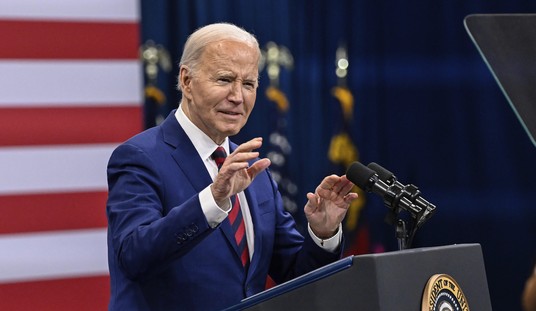I'll begin with the least dramatic prediction, then move to the more hotly-contested questions.
(1) Republicans will hold the House of Representatives. Democrats are likely to eat into the House GOP's historic majority, netting 10-15 seats of the 30 they'd need to flip control. The team at the Cook Political Report -- who pay close attention to individual races for a living -- forecast 200 solid GOP seats, just 18 shy of the majority threshold. They add 25 seats into the "likely or lean Republican" column, plus 26 toss-ups (most of which are drawn from currently GOP-held districts). If House Republicans carry all of their strong seats, win two-thirds of the likely/lean seats, and hold even a small handful of the toss-ups, they'll retain their lower chamber edge. The only real question is how big the new majority will be. It's possible that an unexpectedly bad night for Donald Trump could push Republican losses into the 20's, but it would take a shocking catastrophe for Nancy Pelosi to take back the gavel. Polling doesn't look favorable for Democrats on that score, as their 'generic ballot' lead is less than two points. For reference, that looks a lot closer to their margin from 2012 (+1.2 points -- eight seat gain) than 2008 (+10.7 points -- 21 seat gain).
(2) Hillary Clinton will win a relatively comfortable but non-blowout victory. The 'Clinton blowout' national polls have disappeared almost entirely. Her strongest showings in the final rounds of four-way nationwide surveys are +4 (ABC/Washington Post), +4 (NBC/WSJ), and +4 (Reuters/Ipsos). It's striking that since October, each of those pollsters had shown much larger Clinton advantages (+12 ABC/WaPo, +11 NBC/WSJ, +8). There is no question that she's lost ground down the home stretch; the reinitiating of the FBI's email scandal probe has once again reminded voters of her dishonesty and reckless myopia. Another batch of polling has the race within a point or two, including IBD/TIPP and McClatchy/Marist. The RCP average gives Clinton an overall advantage of about two points, which is close to the "jump ball" gray area that could potentially justify 'Brexit' parallels, but much of the mainstream polling is settling at or around HRC +4. What matters most, however, are battleground polls and the march to 270 electoral votes. On this front, too, Clinton's once-decisive edge has faded. Nate Silver sums things up well, arguing that she's still a heavy favor its, but her lead is not as safe as President Obama's was at this late hour of the 2012 campaign:
I keep circling back to this math, unconvinced that Trump has places like Florida and North Carolina locked into his column, and skeptical of his ability to close the deal in blue territory in order to swipe enough needed electoral votes. That said, late movement in Pennsylvania and especially Michigan adds a few intriguing X-factors to keep an eye on. Is it plausible that Trump can carry all the Romney states, add Florida/Ohio/Iowa (the latter two of which are looking decent), then pick off some combination of New Hampshire, Nevada, Michigan, Wisconsin, Minnesota, Virginia, Pennsylvania and New Mexico (states where Trump's poll position looks competitive and/or he has spent time in recent days)? It is. Anyone who says this race is over is ignoring tends and evidence strongly suggesting that Trump's chances have swelled higher. But a lot of things would have to break in his favor for that to happen. I'm not betting on it. I'd peg the likelihood of a Clinton victory at around 70 percent (scooping up between 280 and 325 electoral votes), which is to say that I'd be surprised, but not stunned, if he pulls off the upset -- for which I laid out a roadmap in this post.
Recommended
(3) Democrats will regain the United States Senate by the narrowest possible margin. How close are these races? This close:
.@FiveThirtyEight estimates control of Senate (Sunday, noon):
— Ellen L. Carmichael (@ellencarmichael) November 6, 2016
Democrats: 50.1%
Republicans: 49.9%
That projection has shifted ever so slightly into the GOP's favor in the last 24 hours. There's a reason why this outcome is my least confident prediction. Here's how I see it: Democrats are strongly favored to gain a seat in Illinois, and have the odds in their favor in Wisconsin and Pennsylvania (despite Ron Johnson's impressive close, and a few polls showing Toomey viable). That's a net gain of three seats right there. Democrats need to get four to take over the Senate; five if Trump wins. They have several paths open to pursue. Ohio looks in the bag for Portman, and Florida is looking stable for Rubio (although a big Trump miss down there could create a problem). Meanwhile, Indiana has shifted strongly against the unbelievably flawed Evan Bayh, and although Roy Blunt is shaky in Missouri, the redness of that state and Trump's big margins there feel likely to carry him over the finish line. And out in Nevada, Joe Heck keeps clinging to a tiny RCP average lead, but the data tea leaves aren't looking great for the party. Let's assume that seat leans toward a Democratic hold.
That leaves New Hampshire and North Carolina as the decisive races. If everything ends up shaking out as I've projected (feel free to trade out a win in PA for a loss in IN, or something like that), the GOP would need a sweep from Kelly Ayotte and Richard Burr to barely hold onto a 51-49 majority. Both races are exceptionally tight, with the Republican incumbents slightly out front in the polling averages. But each contest has the feel of an 'either way' race. Among the many scenarios I've considered, most result in a Democratic gain of three to five Senate seats, with four smack dab in the middle. That's why I'm going with a 50/50 split (with the caveats that a Trump over-performance could limit the damage to a net of one or two seats, and a Trump under-performance could cost the GOP six or seven seats).
Parting thought: If the data upon which I've based these predictions is proven correct, and we really are facing a 50/50 Senate and Clinton presidency next year, guess what? There will be a special election to fill Tim Kaine's Senate seat next fall, and Republicans will have a chance to take back the Senate within months. Who's up for another election and obsessive polling analysis?
UPDATE - I should add that at the gubernatorial level, Republicans have an opportunity to hold serve, or even make gains, on their already-large advantage. Also, a friendly reminder that the above projections are not what I hope will happen, but rather what I believe will happen, based on my review of the available data.

























Join the conversation as a VIP Member